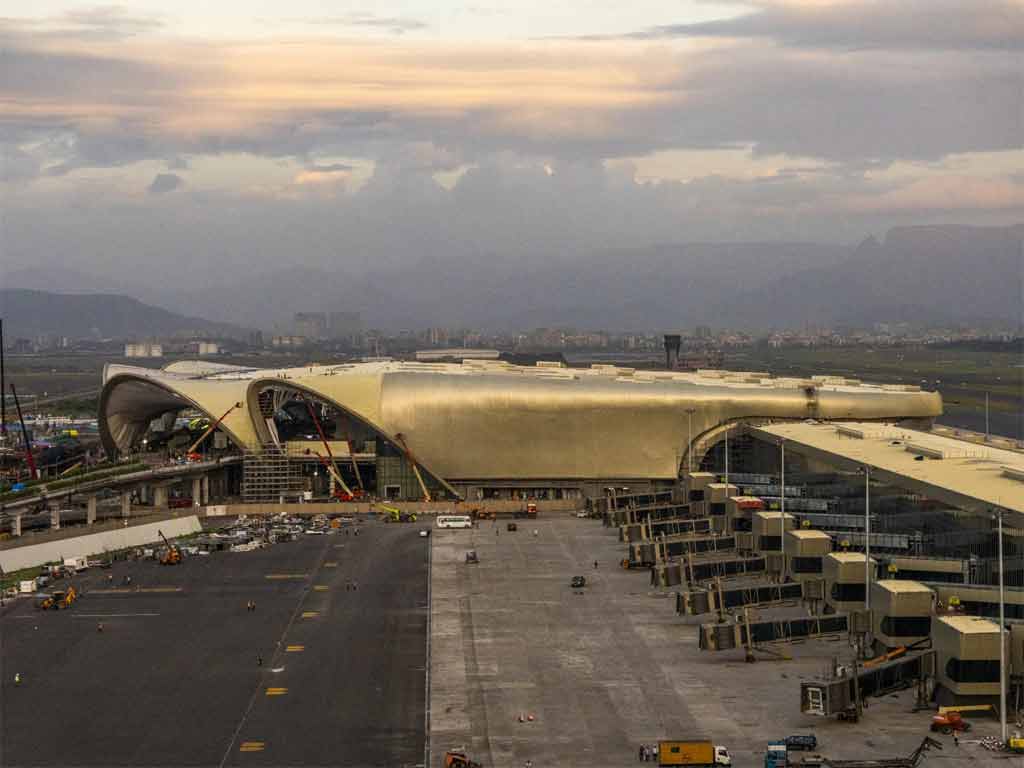The Navi Mumbai International Airport (NMIA), one of India’s most ambitious infrastructure projects, was inaugurated by Prime Minister Narendra Modi on Wednesday.
Modi said Mumbai's long wait was over as the city had now received its second international airport. He added that the Navi Mumbai International Airport would play a major role in establishing the region as Asia's biggest connectivity hub.“The Navi Mumbai International Airport is a project that exemplifies the vision of a developed India,” said the Prime Minister after inaugurating the airport. “Its design, resembling a lotus flower, makes it a living symbol of culture and prosperity. This new airport will connect Maharashtra's farmers directly with the international supply chain, including supermarkets in Europe and the Middle East.”NMIA has been developed as a landmark public-private partnership (PPP) between Mumbai International Airport Limited (MIAL), a subsidiary of Adani Airport Holdings Limited (AAHL), and the City and Industrial Development Corporation (CIDCO).Located in Navi Mumbai, Maharashtra, NMIA is strategically positioned to cater to the burgeoning air traffic demands of the Mumbai Metropolitan Region and Western India. Spanning over 1,160 hectares (2,866 acres), on completion, NMIA is designed to handle 90 million passenger per annum (MPPA). The airport will feature two parallel runways, state-of-the-art terminal buildings, and advanced cargo facilities, ensuring seamless passenger experience and efficient cargo handling. NMIA is set to be a greenfield airport with sustainable and eco-friendly infrastructure, incorporating renewable energy sources and green building practices. In its first two phases, NMIA will operate with a single runway and terminal capable of handling 20 MPPA. Over time, the airport will scale to four runways and multiple terminals, with a dedicated cargo terminal and state-of-the-art facilities for perishables and express cargo, boosting India’s trade and logistics ecosystem. In the initial phase, NMIA will have a capacity of handling 0.5 million metric tonnes of cargo annually.“In an era where India ascends among the world’s largest economies, we have built more than an airport – we have architected Bharat as a gateway and as one of the world’s most indispensable crossroads,” said Gautam Adani, Chairman of the Adani Group. Envisioned as part of a dual-airport system for the Mumbai Metropolitan Region (MMR), NMIA will complement Chhatrapati Shivaji Maharaj International Airport (CSMIA). With an initial capacity of 20 million passengers per annum (MPPA), the airport will eventually expand to manage 90 MPPA, making it one of the largest passenger-handling airports in India.Designed as a multimodal hub, NMIA will be seamlessly connected to the Mumbai Trans Harbour Link, Navi Mumbai and Mumbai Metro, suburban rail networks and planned waterways. This integration will reduce travel times, enhance regional connectivity and strengthen cargo and passenger movement across the vast hinterland of western India. -TradeArabia News Service
sb

